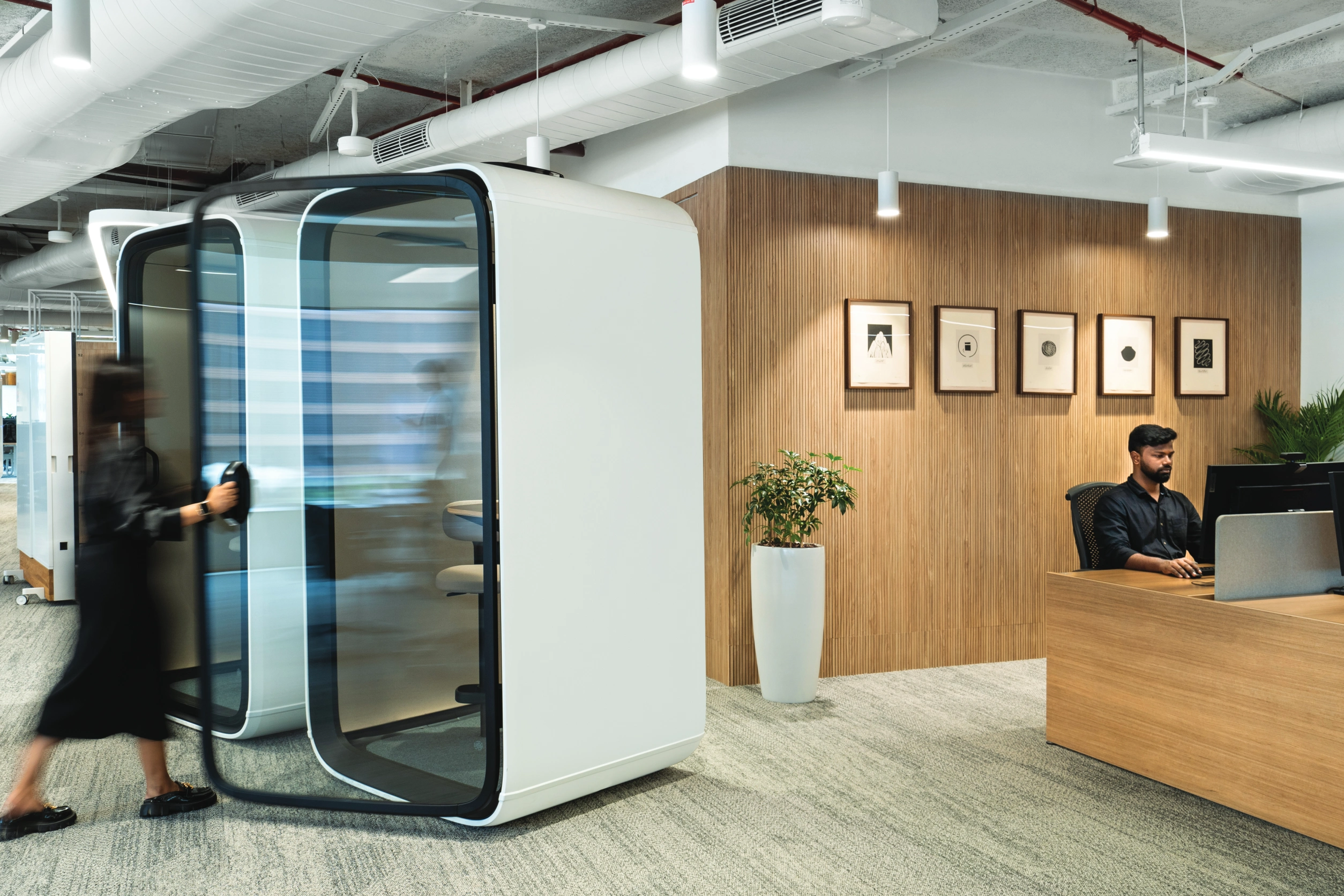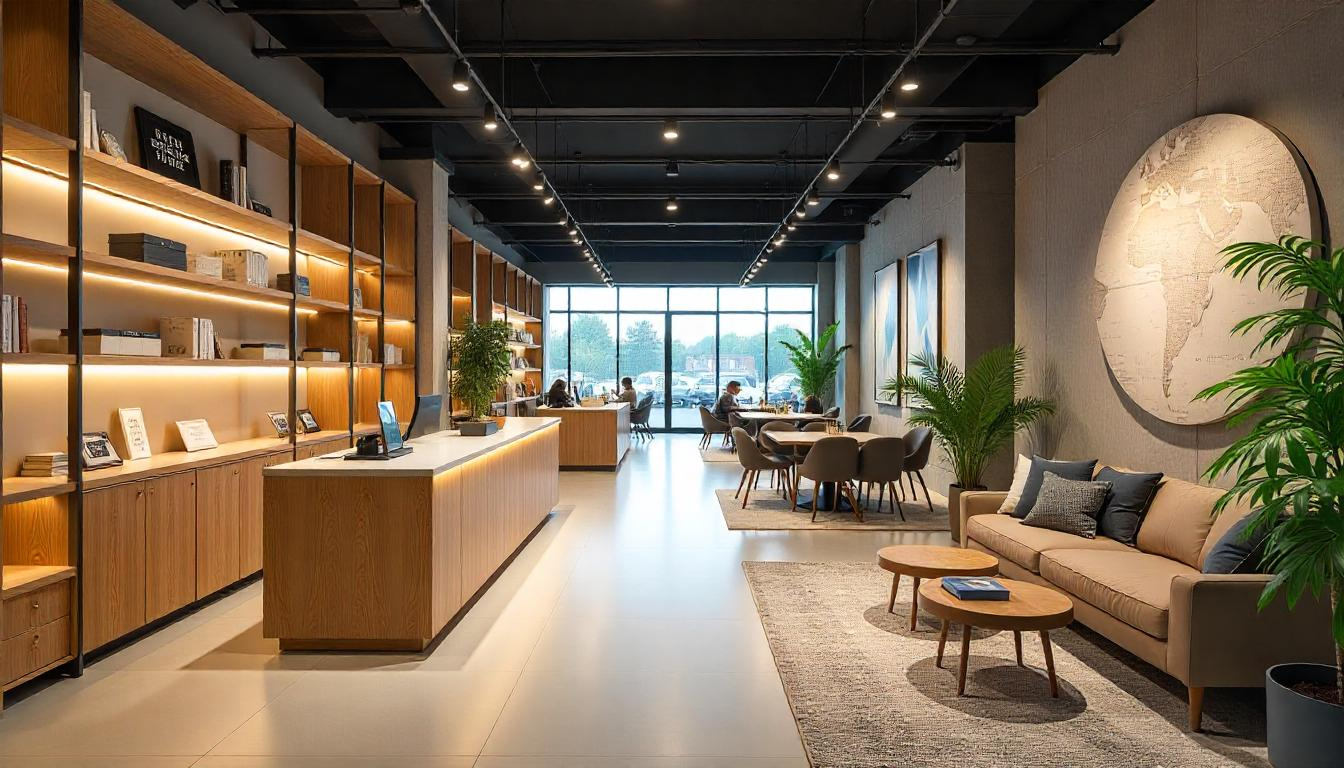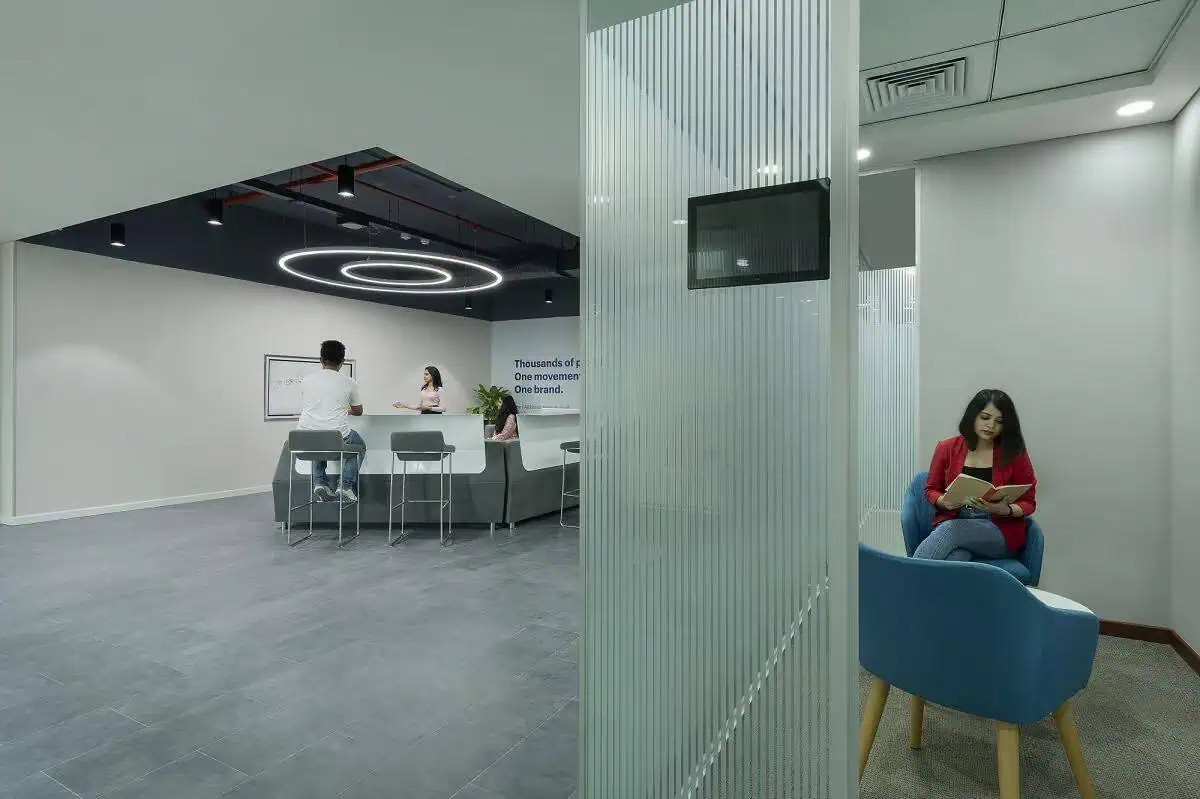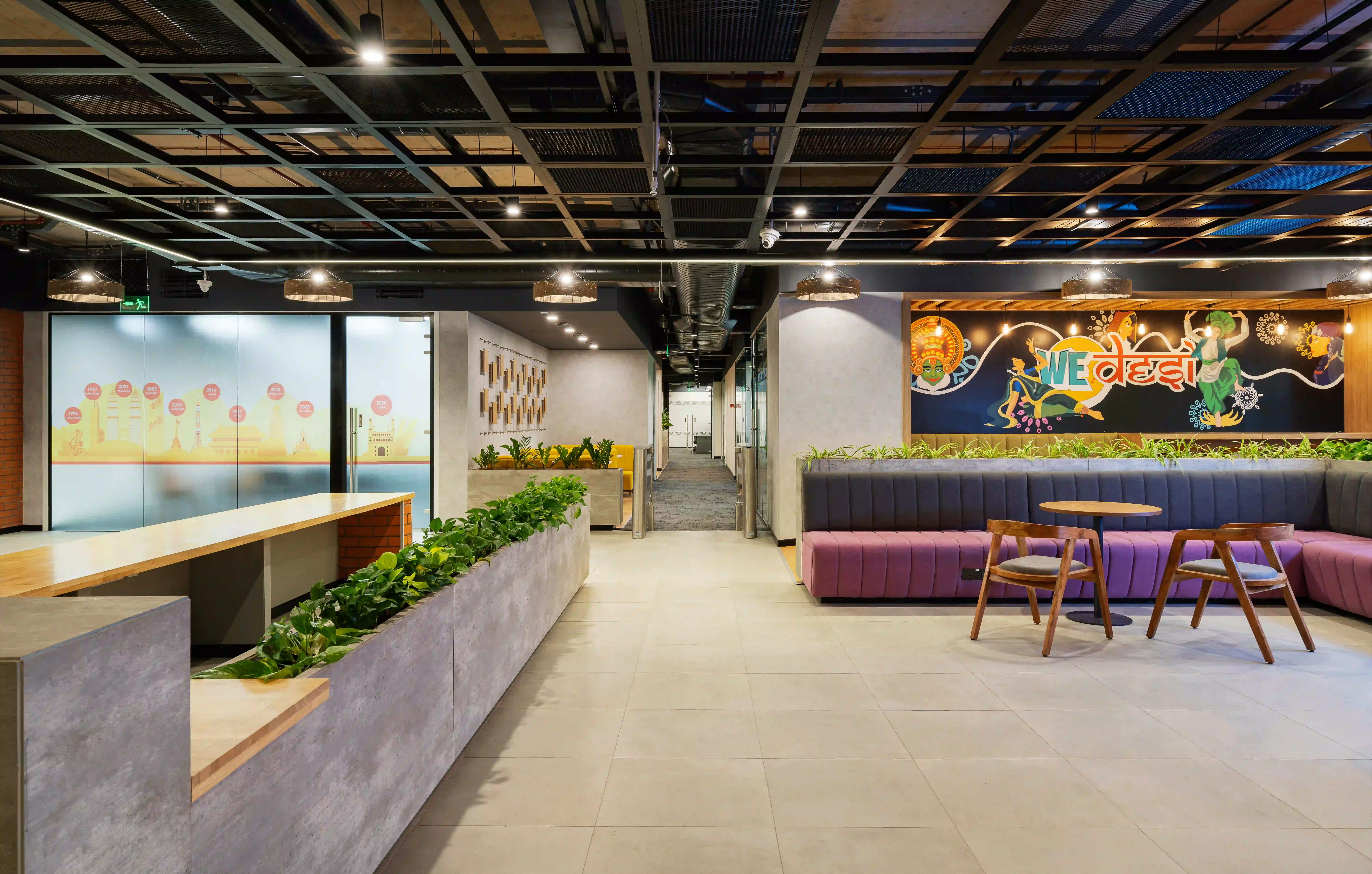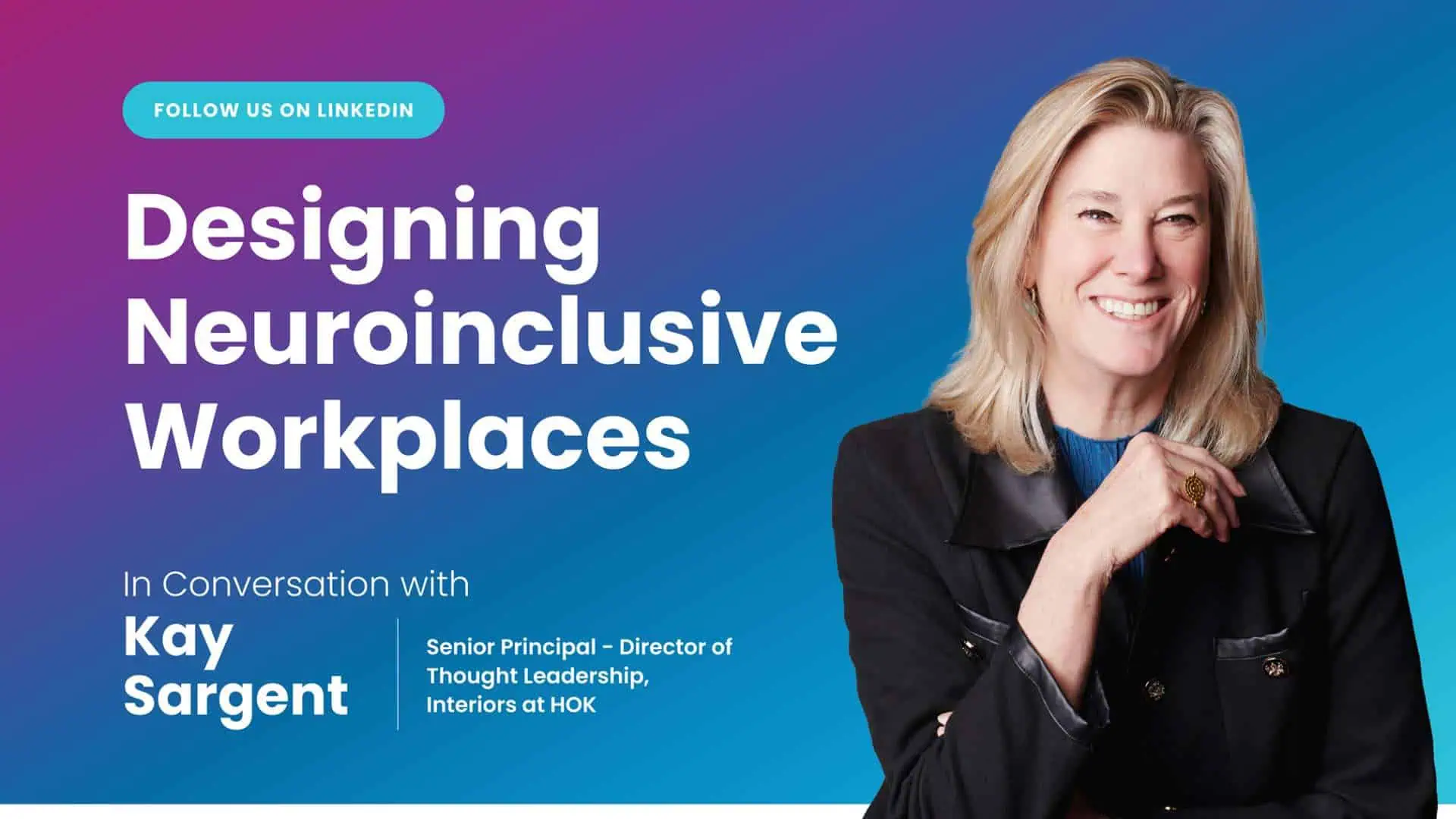The year 2024 has proven to be a turning point for global organizations, marking a period of introspection and innovation in workplace design. With 55% of companies reassessing their office portfolios and 35% opting to reduce space, it’s clear that the dynamics of how, where, and why we work are undergoing significant change. Thus, as we look to 2025, the pace of this transformation is accelerating, influenced by shifting employee needs, economic fluctuations, and advances in technology.
Trends in Regional Markets
As workplace design evolves, regional market trends continue to dictate the demand for premium office spaces. By 2025, global office vacancy rates are expected to stabilize. In particular, APAC markets, including India and Singapore, show strong demand for Grade A and flexible workspaces. According to a recent study, 61% of APAC real estate investors are planning to invest in the office sector, further driving this trend.
Therefore, 2025 will usher in innovative approaches to align workplaces with business goals and the evolving dynamics of office portfolio management.
Let’s explore the workplace design trends and predictions for 2025 that will shape more optimized and future-ready work environments.
Upcoming Workplace Design Trends
1. Green Leasing
Green leasing refers to the practice of incorporating sustainability clauses into commercial lease agreements. These clauses often require landlords and tenants to adopt energy-efficient practices, reduce waste, and maintain environmentally friendly building operations. The goal is to minimize the environmental impact of the property while ensuring both parties share responsibility for sustainable practices.
This trend reflects the growing focus on sustainability in commercial real estate, with increasing demand for eco-friendly workplaces. For example, green leases often include commitments to reduce carbon footprints, lower energy consumption, and use sustainable materials, which helps organizations meet environmental standards such as LEED or WELL certifications.
Business Impact:
Enhanced Brand Reputation and Tenant Attraction: With over 83% of occupiers in the country aiming for 100% green-certified portfolios by 2030, embracing sustainability has become key to attracting top tenants and enhancing brand credibility.
Reduced Operational Costs: Green leases can incentivize both landlords and tenants to adopt energy-saving measures, resulting in lower utility bills and long-term financial benefits.
2. Resurgence of Assigned Desks
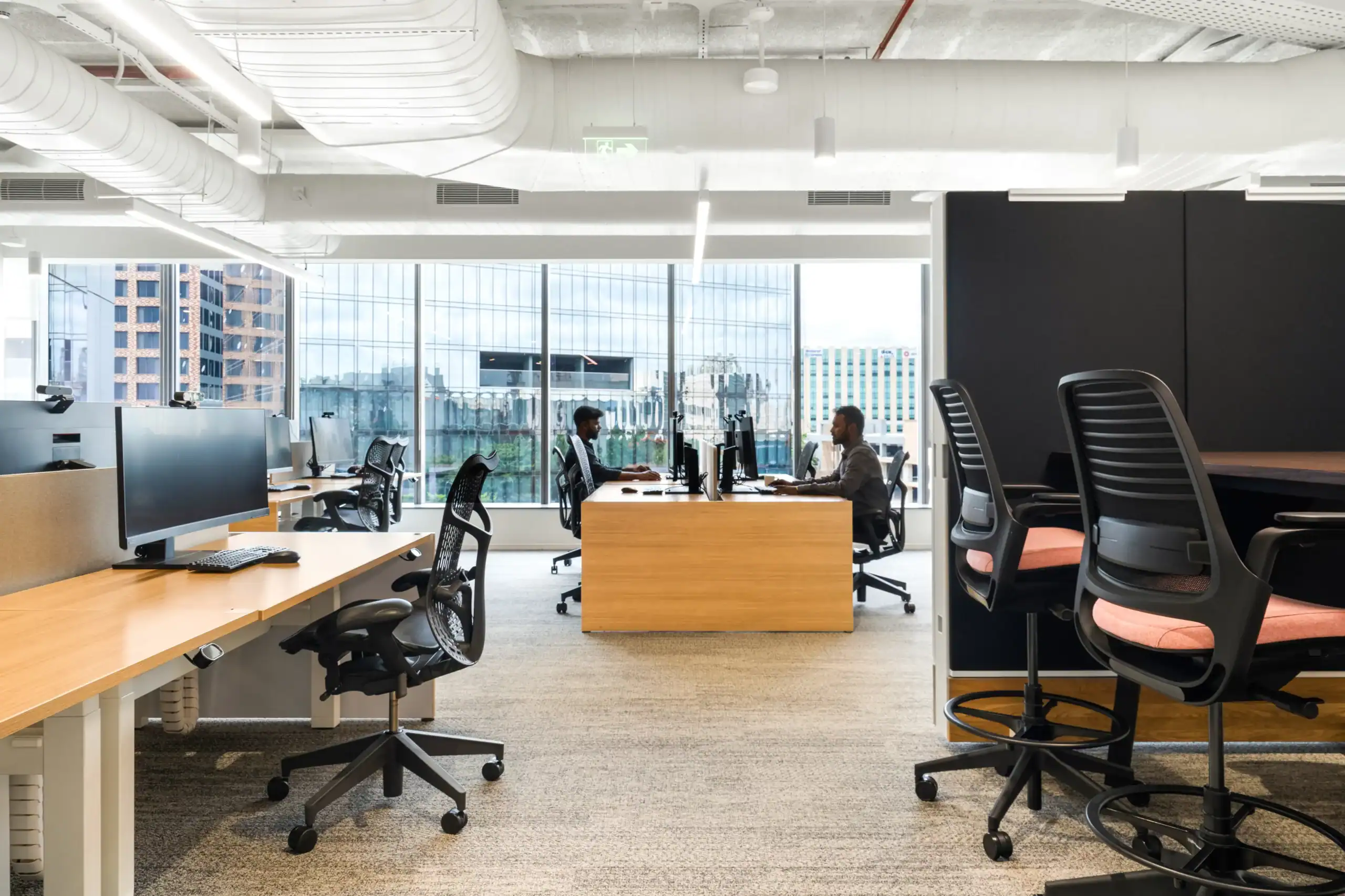
While hot desking has been a popular and cost-efficient solution, certain factors like hygiene concerns, setup time, and lack of personalization have emerged as areas of employee consideration. As a result, in 2025, assigned desks may make a comeback.
Assigned desks eliminate the daily hassle of choosing where to sit and also allow for ‘Visual Comfort Personalization,’ enabling employees to personalize their workspace with items that reflect their aesthetic preferences.
Business Impact:
Higher In-Office Attendance: Assigned desks provide a personalized experience, serving as a motivator for employees to return to the office.
Enhanced Workplace Identity: Encouraging employees to personalize their spaces strengthens their emotional connection and cultivates a sense of belonging.
3. Reclaimed Aesthetics
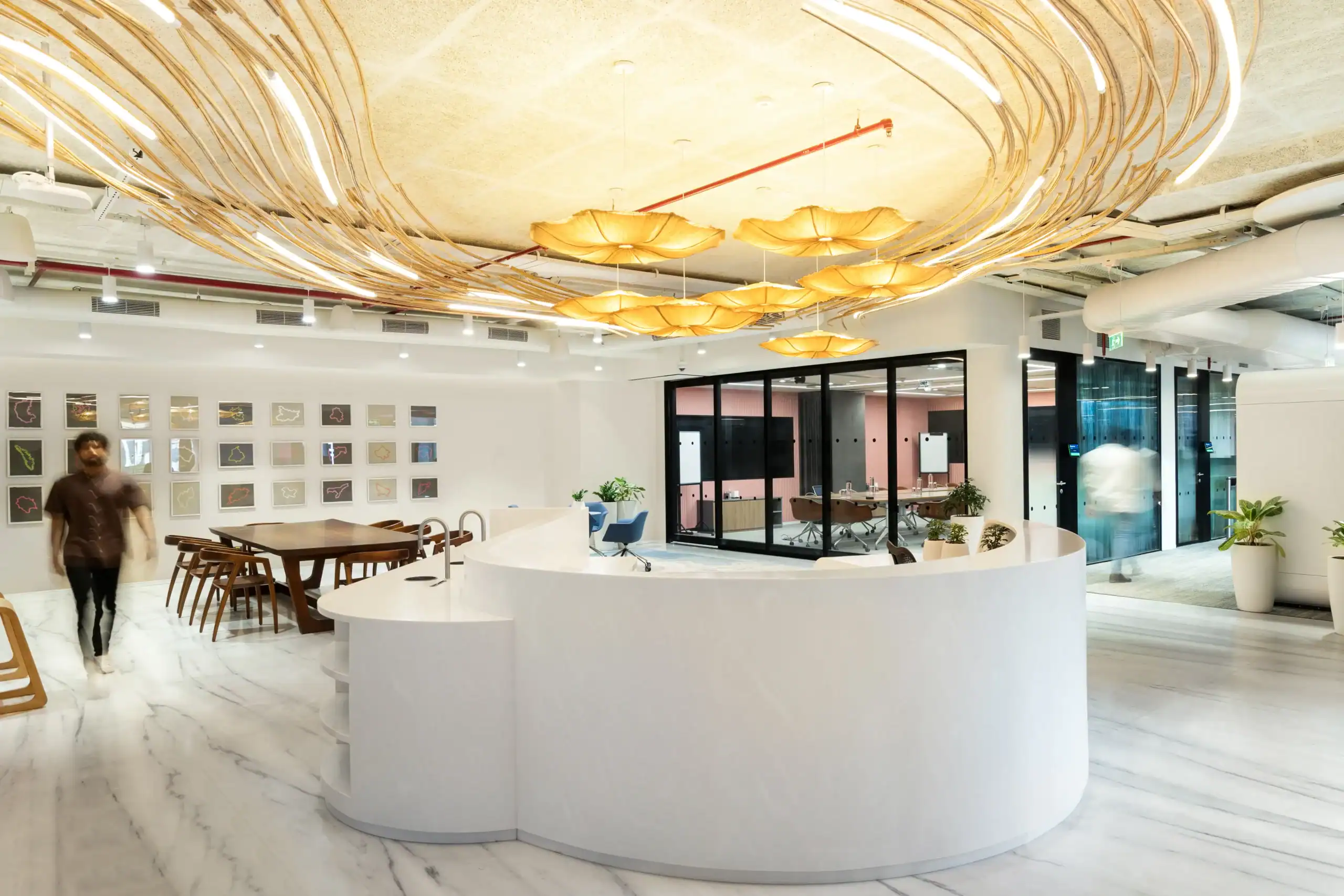
Reclaimed Aesthetics embraces sustainable materials like fast-growing reeds and salvaged wood to create eco-friendly, distinctive decor elements. This can contribute to a net-zero vision while promoting sustainable sourcing, reducing reliance on traditional raw materials, and helping protect ecosystems. Additionally, incorporating reclaimed materials diverts a huge chunk of construction waste from landfills, supporting a circular economy.
A prime example of this is the use of haysticks salvaged from unwanted farmland, which are transformed into stunning statement art pieces and ceiling elements, adding a luxurious and purpose-driven vibe to interior spaces.
Business Impact:
Sustainable Procurement: Sourcing reclaimed materials locally can lead to savings of 15-20% in transportation costs and emissions, according to the Green Building Council.
Easy Lifecycle Management: Reclaimed materials tend to be more durable and require less maintenance, helping to reduce long-term operational costs.
4. No Walls | Flip & Flex Spaces
Flip and Flex Spaces is a trend that focuses on creating adaptable workspaces that can change to meet evolving business demands. This concept allows for fluidity, enabling employees to effortlessly adjust desk clusters. For instance, they can scale from 4 to 14 users without the constraints of traditional walls or partitions.
Furthermore, multi-modal design elements—like converting a 6-person table into an activity set-up or adding a vertical projection screen—are expected to become more prominent.
Business Impact:
Agility: The flexibility to quickly adapt workspaces to changing team sizes, project requirements, and business needs ensures that companies remain agile in dynamic markets.
Space Optimization: Flip and Flex Spaces reduce the need for excessive real estate by making more efficient use of available space, ensuring businesses pay only for what they need.
5. Hyper-realistic Environments
Hyper-realistic Environments is an emerging trend focused on creating immersive, lifelike spaces that enhance employee well-being and productivity. This trend incorporates innovative elements such as curated lighting systems that mimic the natural effect of sunlight indoors, transforming workspaces into bright, energy-efficient environments. The use of sunroof ceiling elements or window facades has captivated designers, offering a unique way to bring natural light into space, fostering a more vibrant and positive atmosphere.
Additionally, sound-scaping is gaining momentum, as businesses design curated acoustic environments to enhance focus, reduce distractions, and improve mental well-being. AI-driven technologies are also playing a role in the creation of hyper-realistic environments.
Business Impact:
Attraction of New-Age Talent: Hyper-realistic environments, with their focus on well-being and innovation, create a workplace that appeals to younger, tech-savvy employees.
Investment in Future of Business: Through tech integrations like these, businesses are not only investing in employee satisfaction but also positioning themselves as forward-thinking, future-ready organizations.
6. Eco-Regen
Eco-Regen is an upcoming trend that leverages workplace design as a tool for global environmental change. Going beyond traditional sustainability, Eco-Regen aims to create a planet-positive impact through office design and office operations. A key element of this trend is integrating planet-positive practices, such as provisions in the design process for a plastic-free workplace or re-purposing ocean plastics into art installations in the workspaces. With event spaces gaining prominence in the workplace, this practice will also gain traction in 2025.
For example, the Blue Standard by Oceanic Global is a cross-industry certification that helps businesses with the tools, resources, and partnerships needed to create planet-positive offices.
In contrast to trends like Reclaimed Aesthetics, which focuses on sustainability through the reuse of materials, Eco-Regen emphasizes a broader global cause.
Business Impact:
Accelerating Science-Based Targets (SBTi) Alignment: By adopting such practices, businesses actively showcase measurable progress toward their SBTs. For example, reducing resource waste and reusing ocean plastics lowers Scope 3 emissions (indirect supply chain impacts), a critical challenge for many companies.
Improved Stakeholder and Investor Confidence: Over 73% of investors consider a company’s environmental performance when making decisions. Implementing such practices can thus position businesses as leaders in sustainability, attracting socially conscious investors and stakeholders.
In Conclusion
With regions like APAC leading the charge in premium office space demand, companies are adapting their office portfolios to not only attract top talent but also to align with their sustainability goals. Trends such as eco-regenerative design, which seeks to create planet-positive workspaces, are not only a response to the climate crisis but also a strategic investment that can improve stakeholder confidence and investor attraction.
As we continue to face global challenges and opportunities, workplace design is no longer just about aesthetics or functionality. It’s about creating environments that contribute positively to the planet, inspire collaboration, and drive innovation.
Stay ahead of the curve and start implementing these 2025 workplace design trends today.
Contact our team at Zyeta to discover more!
Related Reads:
Trending 04 Influential Styles Shaping Workplace Design in Singapore
04 Emerging Office Design Trends in India and Southeast Asia

